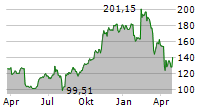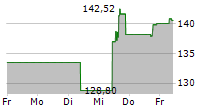BRISTOL, TN / ACCESS Newswire / October 15, 2025 / NextTrip, Inc. (NASDAQ:NTRP) isn't another online travel player. The company is building a model that could redefine how travelers discover, share, and book experiences.
Expedia still dominates with 19.3% U.S. market share and $13.6 billion in annual revenue. But market control doesn't equal momentum. Growth has stalled while Booking and Airbnb accelerate globally. Expedia remains boxed into North America.
NextTrip is turning content into commerce. Engagement, not just transactions, drives the next era of travel.
The valuation gap between the two companies reveals asymmetric opportunity.
The Technology Foundation Most Investors Miss
NextTrip operates with a market cap of $27.80 million against Expedia's $27.48 billion. That's a nearly 1,000x difference. But valuation gaps create asymmetric opportunity when technology differentiation exists.
NextTrip built its platform on the NXT2.0 booking engine, technology that originally powered a travel agency generating over $450 million in annual sales. The company acquired Bookit.com's assets, a fully integrated booking engine with more than $40 million invested in its development. This acquisition provided a proven, revenue-generating foundation rather than building from scratch.
The platform integrates with major inventory providers, delivering access to over 4 million properties worldwide. But NextTrip layered specialized tools on top: PayDlay for payment deferral, a B2B portal serving 175+ agents, and group booking tools for weddings and corporate events. These target niches where large OTAs have less focus.
The Content-to-Commerce Model Expedia Can't Replicate Quickly
NextTrip acquired JOURNY.tv, a travel-focused streaming channel that has reached 17 million viewers across multiple platforms. This creates a media-driven customer acquisition channel that traditional online travel agencies lack.
The company also operates Compass.tv and recently launched TravelMagazine.com 2.0, expanding its content footprint. JOURNY now produces original travel programming, not just licensed content, giving NextTrip proprietary media assets that competitors can't simply license away.
The integration matters more than the individual pieces.
Viewers watch travel content, get inspired, and book directly through the same ecosystem. No platform switching. No attribution gaps. The content primes intent, and the commerce infrastructure captures it immediately.
Expedia operates primarily as a transaction platform. NextTrip built an integrated content-to-commerce loop. Replicating this model requires acquiring or building media properties, integrating them with booking systems, and creating seamless user experiences across both.
That takes time, capital, and strategic vision. Integrated models create advantages when executed effectively.
The company also acquired Five Star Alliance, a luxury travel brand with over 5,000 high-end hotel partners and a 4.9 Trustpilot rating. This adds premium positioning and an established customer base to the portfolio.
These acquisitions feed a vertically integrated ecosystem. Content inspires travel intent. Media builds brand affinity. The booking platform captures transactions. Fintech tools reduce friction. B2B infrastructure scales distribution through agents.
Each component reinforces the others. That's strategic differentiation in a commoditized market.
The Long-Term Play Most Analysts Overlook
Travel booking sites compete in a brutal economics game. Customer acquisition costs run high. Brand loyalty runs low. Travelers comparison shop across five or more platforms before booking.
The average online travel agency spends $50-150 acquiring each customer through paid search and social ads. That customer books once, maybe twice, then disappears into the comparison shopping cycle again.
NextTrip's model breaks this pattern.
The content engine changes the fundamental economics. JOURNY produces travel inspiration that attracts viewers organically. Those viewers convert to customers without the traditional acquisition cost structure. As the content library expands, the cost per acquisition drops while the audience compounds.
This creates a widening advantage over time.
Consider the math on even modest market penetration. If JOURNY scales to 50 million viewers over three years, a 1% conversion rate yields 500,000 customers annually. At an average booking value of $2,000, that represents $1 billion in gross bookings. A 10% take rate generates $100 million in revenue.
The current market cap sits at $27.80 million.
But revenue diversification matters more than single-channel growth. NextTrip operates across multiple monetization layers. The booking platform generates transaction fees. JOURNY produces advertising revenue from travel brands. The B2B agent network creates distribution fees. PayDlay adds fintech margin. Five Star Alliance contributes luxury segment premiums.
Each revenue stream reinforces the others without cannibalizing the core business.
The strategic question becomes whether NextTrip can execute across these multiple disciplines simultaneously. Media production requires different capabilities than booking platform operations. Technology infrastructure demands different skills than supplier relationship management.
Complexity creates both opportunity and risk.
Expedia could theoretically build competing media assets. The practical barriers run deeper than capital or time. Large organizations struggle with hybrid business models. Media operations require creative risk-taking. Booking platforms demand operational precision. The cultural tension between these approaches typically favors smaller, founder-led companies.
NextTrip's $10 million insider investment signals management belief in navigating this complexity. The question for investors centers on execution probability rather than strategic validity.
Market Tailwinds and Structural Shifts
The broader online travel agency market provides substantial growth runway. Industry projections show the market reaching $384.99 million by 2031, representing a 6.2% compound annual growth rate from 2024.
Rising tides lift differentiated boats faster.
AI disruption creates both threat and opportunity. Surveys indicate up to 40% of travelers would book directly through AI chat interfaces if live pricing and payment integration become available. Expedia's stock initially rose 7% on ChatGPT partnership news, then fell 10% when investors realized AI could compress take rates by limiting upselling power.
This reveals vulnerability in Expedia's model. The company depends on upselling and bundling to drive margins. AI-powered booking interfaces could commoditize the core transaction, squeezing profitability.
NextTrip's content-first approach positions differently. Media engagement builds brand affinity before the transaction occurs. This creates value beyond pure transaction efficiency, potentially more defensible against AI compression.
Insider Confidence and Execution Capability
NextTrip's board and senior management collectively invested $10 million in their stake. Insider capital deployment signals conviction. These aren't passive shareholders. They're operators with skin in the game.
CEO Bill Kerby brings expertise across both media and travel, a rare combination that aligns with the hybrid business model. The management team holds over 100 years of combined industry experience. Execution risk remains substantial, but the strategic positioning creates opportunity.
The Investment Thesis in Market Context
Expedia's market dominance comes with structural vulnerabilities. Market share erosion, geographic concentration, and AI disruption risk create openings for challengers. The company's size also limits agility in responding to emerging competitive threats.
NextTrip's valuation reflects early-stage risk. The nearly 1,000x gap between the companies means NextTrip doesn't need to overtake Expedia to generate substantial returns.
The market capture math reveals asymmetric opportunity. The online travel market generates hundreds of billions in annual gross bookings. NextTrip capturing 0.5% of this market would represent billions in transaction volume. At current valuation, even fractional market penetration drives substantial multiple expansion.
The content-to-commerce model provides the mechanism for this capture. Traditional OTAs fight for the same comparison-shopping customers. NextTrip builds audience relationships before booking intent exists. This shifts competition from price and inventory to inspiration and engagement.
Different battlefield. Different advantages.
The content-to-commerce model represents genuine differentiation. The integration of media assets with booking infrastructure creates a strategic advantage that established players can't replicate quickly without major acquisitions or multi-year development cycles.
The organizational barriers matter as much as the technical ones. Expedia operates as a transaction-focused engineering culture. Building media capabilities requires creative talent, content production expertise, and audience development skills. Integrating these cultures takes years, not quarters. Acquisitions often fail because the acquiring company can't maintain what made the acquired asset valuable.
NextTrip built the integration from the ground up. The content and commerce teams operate as one organization, not separate divisions fighting for resources.
Market tailwinds support growth across the sector. A rising market creates space for multiple winners. NextTrip doesn't need Expedia to fail. It needs to execute its differentiated strategy in an expanding market.
NextTrip assembled infrastructure that took competitors years and tens of millions to develop, then layered unique media assets on top. Management's $10 million collective investment demonstrates alignment with shareholder interests. The strategic pieces are in place. Execution will determine whether the integrated model captures meaningful market share.
Read more at The Vanderbilt Report
About Vanderbilt Report
Vanderbilt Report is a financial news and content platform. The information contained in this release is for informational purposes only and should not be considered an offer to buy or sell securities. All material is provided "as is" without any warranty of any kind.
Media Contact
Kristen Owens
info@vanderbiltreport.com
Compliance Note:
The Vanderbilt Report is a financial news and analysis platform. The information contained herein is based on publicly available sources, regulatory filings, and company disclosures believed to be accurate at the time of publication. This report is for informational purposes only and should not be construed as investment advice, a solicitation, or an offer to buy or sell any security.
The Vanderbilt Report does not provide investment banking, brokerage, or advisory services, and no compensation related to the analysis or publication has been received from the companies mentioned unless expressly disclosed.
Readers are encouraged to perform their own due diligence and consult a licensed financial advisor before making any investment decisions. All forward-looking statements are subject to risks and uncertainties that may cause actual results to differ materially.
SOURCE: Nexttrip, Inc
View the original press release on ACCESS Newswire:
https://www.accessnewswire.com/newsroom/en/travel/why-nexttrips-content-model-threatens-expedias-dominance-1087070


